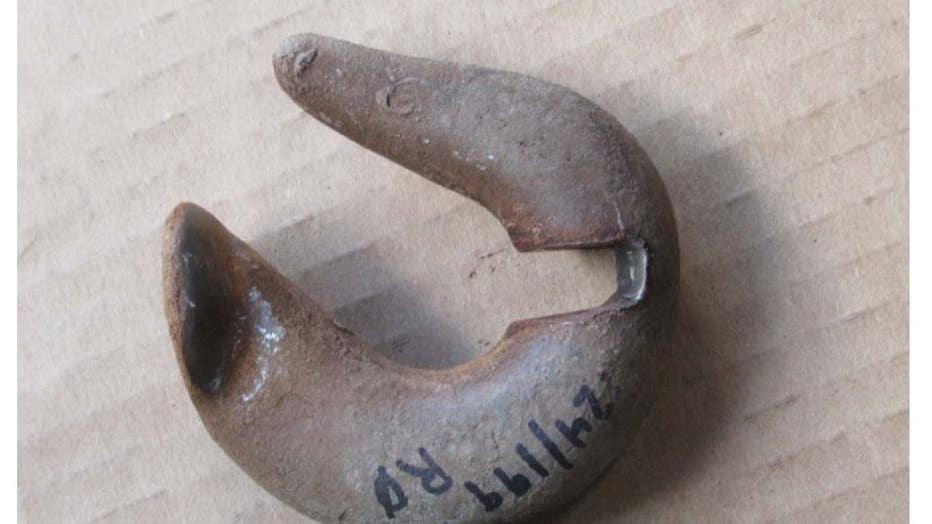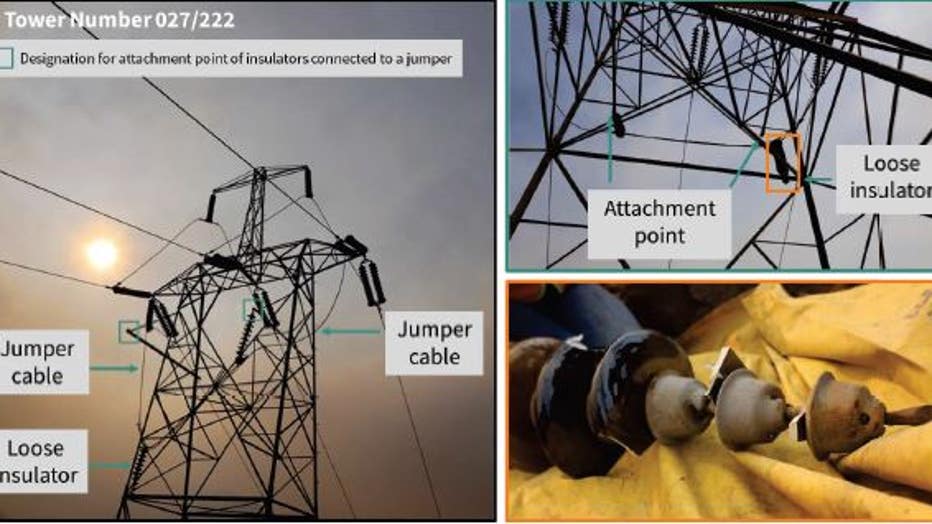PG&E failed to inspect aging tower before deadly Camp Fire
SAN FRANCISCO - For years, Pacific Gas and Electric failed to properly inspect the aging transmission tower that sparked the Camp Fire in Butte County, the deadliest fire in state history, according to safety and enforcement staff at the California Public Utilities Commission.
The agency determined that the utility’s failure to thoroughly inspect and repair the nearly 100-year-old transmission tower implicated in starting the Camp Fire last year was not an isolated incident, “but rather indicative of an over pattern of inadequate inspections and maintenance” failures of all of PG&E’s transmission equipment.
The details revealed by CPUC investigators paint a troubling picture of decades of neglect, cutting corners, and PG&E violating its own safety policies.
In a report released late last week, the CPUC's Safety and Enforcement Division found that PG&E inspectors did not physically climb the tower for a close visual inspection “between at least 2001 and the time of the Camp Fire.” Regulators noted that having a worker actually climb the tower for an inspection may have helped PG&E identify a decaying piece of equipment called a C-hook, which was supposed to keep jumper wires aloft and away from the tower itself. When the C-hook broke, it’s believed an electrified jumper cable, which connects the live wires between the tower’s arms, touched the tower structure and created sparks.

A C-hook on PG&E's Caribou-Palermo transmission line, which failed and sparked the deadly Camp Fire.

A similar C-hook removed from the same high-voltage PG&E power line that showed "significant wear." It was removed from the tower as evidence.
Investigators found “significant wear” on a C-hook from the transmission line. In its report, the CPUC also faulted PG&E for 12 separate violations, including:
- Failing to replace or reinforce the C-hook before its deterioration became a safety issue.
- Failing to inspect the tower thoroughly and failing to detect safety hazards.
- Failing to conduct “detailed climbing inspections,” despite the condition of the tower warranting them under PG&E’s own guidelines.
- Using outdated inspection forms during climbing inspections between Sept. 29 to Nov. 5, 2018, the weeks directly before the Camp Fire broke out.
- Failing to keep up and “effective inspection and maintenance program” to flag safety issues and protect the public.
In an email sent Tuesday, PG&E stated: "Without question, the loss of life, homes and businesses is heartbreaking. The tragedy in Butte County on Nov. 8, 2018, will never be forgotten. We remain deeply sorry about the role our equipment had in this tragedy, and we apologize to all those impacted by the devastating Camp Fire."
PG&E has said that it has since retired the transmission line where the Camp Fire ignited. A spokesperson for the utility also said that after the wildfires of 2017 and 2018 the company implemented "accelerated saftey inspections," addressed high-prioirty repairs, and fixed problems that pose immediate dangers to public safety.
"Since January 2019, we have inspected almost 730,000 transmission, distribution and substation structures and over 25 million electrical components in those areas," a spokesperson said via email.

PG&E transmission tower after the 2018 camp fire
The Camp Fire started the morning of Nov. 8, 2018, and burned a total of 153,336 acres, destroying 18,804 structures and resulting in 85 deaths and several firefighter injuries.
The fire started in the early morning hours near the community of Pulga in Butte County. Fueled by dry vegetation and red flag conditions consisting of strong winds, low humidity and warm temperatures promoted the fire and caused extreme rates of spread, rapidly burning into Pulga to the east and west into Concow, Paradise, Magalia and the outskirts of east Chico.
The investigation identified a second ignition sight near the intersection of Concow and Rim roads. The cause of the second fire was determined to be vegetation into electrical distribution lines owned and operated by PG&E. This fire was consumed by the original fire which started earlier near Pulga.

